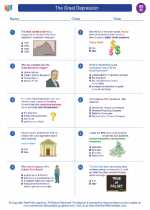Unemployment Rate
The unemployment rate is a key economic indicator that measures the percentage of the total labor force that is unemployed and actively seeking employment. It is an important measure of the health of an economy and is used by policymakers, economists, and analysts to assess the state of the labor market.
Calculating the Unemployment Rate
The unemployment rate is calculated using the following formula:
Unemployment Rate = (Number of unemployed individuals / Labor Force) x 100
The labor force includes all individuals who are employed or actively seeking employment. The number of unemployed individuals refers to those who are not currently employed but are actively seeking work.
Types of Unemployment
There are several types of unemployment that can contribute to the overall unemployment rate:
- Frictional Unemployment: This type of unemployment occurs when individuals are temporarily between jobs as they search for new employment opportunities.
- Structural Unemployment: Structural unemployment arises from shifts in the economy that lead to a mismatch between the skills of the workforce and the available jobs.
- Cyclical Unemployment: Cyclical unemployment is tied to the business cycle and occurs when there is a downturn in economic activity, leading to layoffs and job losses.
- Seasonal Unemployment: This type of unemployment occurs due to seasonal fluctuations in demand for labor, such as in industries like agriculture or tourism.
Interpreting the Unemployment Rate
A high unemployment rate may indicate a weak labor market and may signal economic challenges such as reduced consumer spending and lower overall economic growth. Conversely, a low unemployment rate suggests a robust labor market and may lead to concerns about potential labor shortages and inflationary pressures.
Study Guide
- What is the formula for calculating the unemployment rate?
- Discuss the different types of unemployment and provide examples of each.
- How does the unemployment rate impact the overall economy?
- What are some potential limitations of using the unemployment rate as a measure of labor market health?
◂Social Studies Worksheets and Study Guides Eighth Grade. The Great Depression

 Worksheet/Answer key
Worksheet/Answer key
 Worksheet/Answer key
Worksheet/Answer key
 Worksheet/Answer key
Worksheet/Answer key
 Worksheet/Answer key
Worksheet/Answer key
